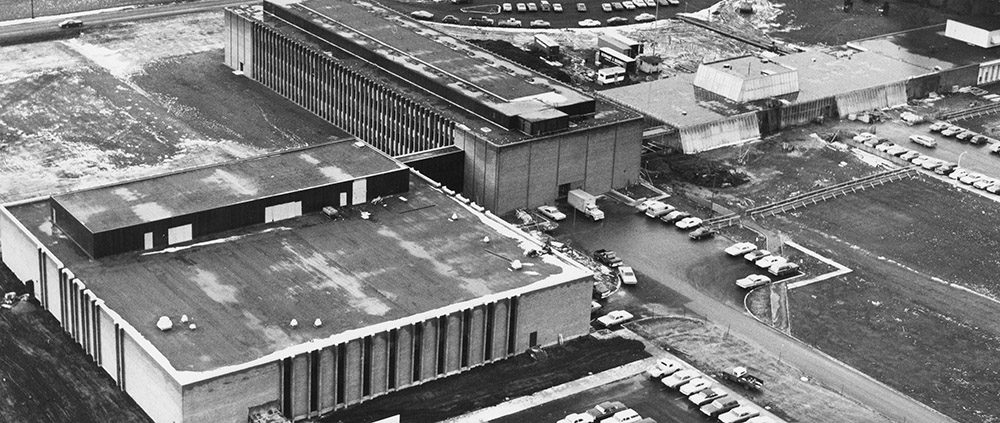The following is the fifth in a seven-part series. We hope you’ll enjoy.
Excitement ran high in Webster in the fall of 1960. In downtown Rochester, the Xerox 914, the world’s first-ever automatic, plain-paper copier, had become a runaway hit since its introduction in September 1959.
The press confirmed Haloid-Xerox Inc. as the world leader of the market, signaling tremendous interest from the investment community.
Xerography—from “xeros” and “graphein,” Greek words for dry and writing—began as “electrophotography,” the brainchild of patent analyst Chester Carlson. Carlson secured the patent for electrophotography in 1938, but he could not interest any company in using the process to create a product. He would have disappeared into obscurity had it not been for the vision of John Dessauer, Chief of Research at Haloid Company, and his employer, Joseph C Wilson. Haloid made photographic paper, and its management team had been looking for an idea that would make them more competitive in a crowded market.
The Haloid team worked with Carlson to produce the Xerox Model A, nicknamed the “Ox Box,” a better method of duplicating documents than the messy, inconsistent ditto master of the time. Haloid used the profits to develop its first commercially viable copier—and as the 914 took off, Haloid-Xerox began its meteoric rise. At that time, its entire product development department fit into an old house on Hollenbeck Street in Rochester, and a research facility on Lake Avenue had actually been converted from a toy shop. Leftover warehouses became inadequate for the growing sophistication of the company’s product manufacturing.
Joe Wilson built a one-story factory to manufacture photoreceptor plates on 180 acres he owned in Webster, and as demand grew, buildings sprang up on the Webster property. Research and Engineering moved from Hollenbeck Street to Webster, creating a center of new product development with 300 physicists, chemists, and engineers, working in dustless clean-rooms and sparkling new laboratories.
Webster’s leadership began to enjoy the benefits of Xerox as a resident. “Happy?” town supervisor Harold Garnham echoed the question from D&C reporter Hugh Wells. “We’re tickled to death! Greece didn’t want them, so we took them, and who wouldn’t be happy?”
The explosive growth meant that Xerox would contribute a tidy sum in taxes to Webster, which could then be used to boost school programs, build roads and water treatment facilities, and attract stores, restaurants, hotels, and other commerce. Wilson purchased another 232 acres, and the newspapers carried mentions of more major land purchases in 1962 alone: 48 ½ acres on Phillips Road from Emma Koch for $97,000 (the equivalent of $831,000 today); 67.5 acres from Stanley M. Holdraker for $150,000 ($1.2 million in 2020 dollars); and 57 acres on Salt Road from Frank P. Yaeger for $123,000 (roughly $1 million today). Apartment complexes and subdivisions sprang up to provide homes to hundreds of Xerox employees. New roads eased traffic to the growing Xerox campus. Demand for water triggered the construction of additional sewer systems and a water treatment plant.
The company added its largest building to date in 1962: a machine manufacturing and distribution center. The employee base grew by a third in 1963 alone, overcrowding the brand-new building and spurring the construction of more workspace. The D&C reported that the campus employed more than 4,000 people in 1966. Growth showed no signs of stopping. “Today research, engineering and manufacturing activities of the Haloid-spawned Xerox Corp. occupy 32 buildings with floor space comparable to 42 football fields,” the paper reported in 1967. “The site they occupy has ballooned to more than 1,000 acres.”
Growth and prosperity at Xerox continued through the 1970s and into the 1980s, with 15,300 people working for the company. As the decade drew to a close, however, a new buzz term entered the lexicon: the “paperless office.” Digital storage systems began to replace filing cabinets full of documents. The arrival of the internet in the 1990s moved every office away from paper distribution and toward eco-friendly computers.
Xerox changed its focus away from “The Document Company” to become a workplace technology company. A thriving company in this new configuration, it maintains its Webster campus as its largest worldwide manufacturing site, including the recently relocated administrative staff from downtown’s Xerox Tower.
Read the next piece in this seven-part series: J.W. Hallauer & Sons: The Lakeshore Belt’s Dried Fruit Empire



